1850-Spring 1870 Jem Robinson
Machel Place, formerly Chetwynd House Stables, and before that a pair of cottages in a Tudor Gothic style, was built in 1850 by the jockey Jem Robinson. James (Jem) Robinson was born into a Newmarket racing family on 22nd June 1794. His father, John Robinson, was a trainer, while John's older brother, also inconveniently called John, was also a trainer who trained Tarantell (SR 1939) to win the 1833 One Thousand Guineas. Jem was apprentice to Robert Robson in Newmarket, where he was coached by Frank Buckle. He remained with Robson for 13 years, carving out for himself a career as one of the most successful Classic winning jockeys of all time. He rode 24 English Classic winners, including 6 Epsom Derby victories, surpassed only by Lester Piggott. His 6 Derby winners were in 1817 Azor (SR 2030), 1824 Cedric (SR 2046), in 1825 Middleton (SR 2031), in 1827 Mameluke (SR 2030), in 1828 Cadland (SR 2016) and in 1836 Bay Middleton (SR 2062). In 1852 he suffered an injury on Feramorz at Newmarket which forced him into retirement. By then he had purchased two cottages and an acre paddock which he turned into a training yard, although he was not as successful a trainer as he was a jockey. Next door to his stable was Nat Flatman's widow who would rent out ground to him.
For over 4 centuries racing has been staged in Newmarket, but how have the racecourses evolved from an initial starting point at Fleam Dyke Pumping Station, some 8 miles from the town, with a winning post barely 200 metres from the town centre, into two world recognized, excellent racecourses and a universal acceptance that Newmarket is the Headquarters of racing?
To access an interactive racecourse map showing over 50 individually named racecourses CLICK HERE. The map will enable you to:-
1. Determine when extended races over 8 miles, 6 miles and 4 miles began to be replaced by the courses now visited by thousands annually;
2. Consider how the challenge of crossing the Devil's Dyke was overcome;
3. Contemplate why the town no longer has a steeplechase course despite having at least 5 courses during the past 2 centuries;
4. Examine the practicalities of having up to 48 starting posts and winning posts;
5. Appreciate that it was not financially viable to have an open racecourse spread widely across the heath, with a finishing post barely 200 metres from the town centre;
6. Research how and why the Cambridgeshire Handicap has been contested over 3 different courses.
NOTE: The map does not make mention of 2 particular courses:-
(i) Sefton Course (also known as the Cambridge Road Course)
Source: 1970 Raceform.Used from 1959 to 1975.
(ii) New Circular Course
The Circular Handicap was run on Friday 29th October 1875 on the New Circular Course of about two miles.
Source: London Standard (30th October 1875): ''the horses started near the Turn of the Lands, ran back way of the Cambridgeshire Course towards the Ditch, and afterwards proceeded down the side of the Tan Gallop, and turned into the Rowley Mile near the Bretby Stakes starting post, finishing at the stand at the end of the flat. Except in the hollow near the Cambridgeshire start the runners should have been visible all the way if the sky had been bright and clear''.
Another report hoped that the Circular Handicap would become a feature in future programmes, as it would be contested in front of the new grandstand which would be completed in about a year and would be able to accommodate thousands.
(I am grateful to Tim Cox for bringing attention to these 2 courses.)
Enjoy researching the intriguing history of Newmarket and its many racecourses.
MIDDLETON (SR 2031)
Middleton, a chestnut colt by Phantom out of Web, was foaled in 1822 at Middleton Stoney Stud in Oxfordshire which was owned by George Child Villiers, the 5th Earl of Jersey. Middleton, trained by James Edwards, did not run at two, but was nevertheless heavily gambled on in the Epsom Derby despite having never run before. The bookmakers had weighty commitments and did all they could to prevent Middleton from winning, including bribing his stable lad. However, Middleton, the 7/4 favourite in a field of 18, prevailed when ridden by Jem Robinson, although he did not contest another race. He went to stud having won his only race, the Derby, but was sold to Russia.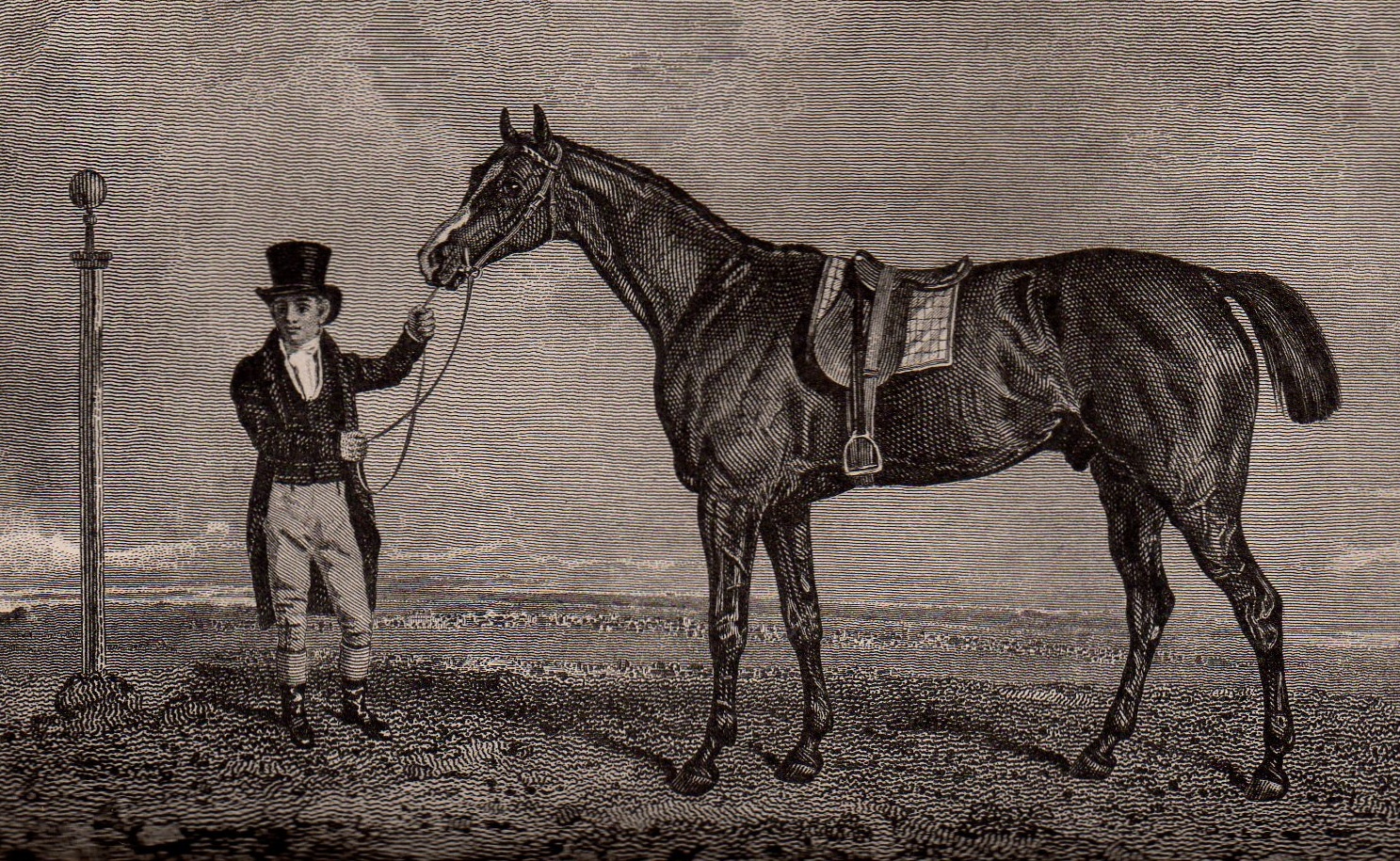
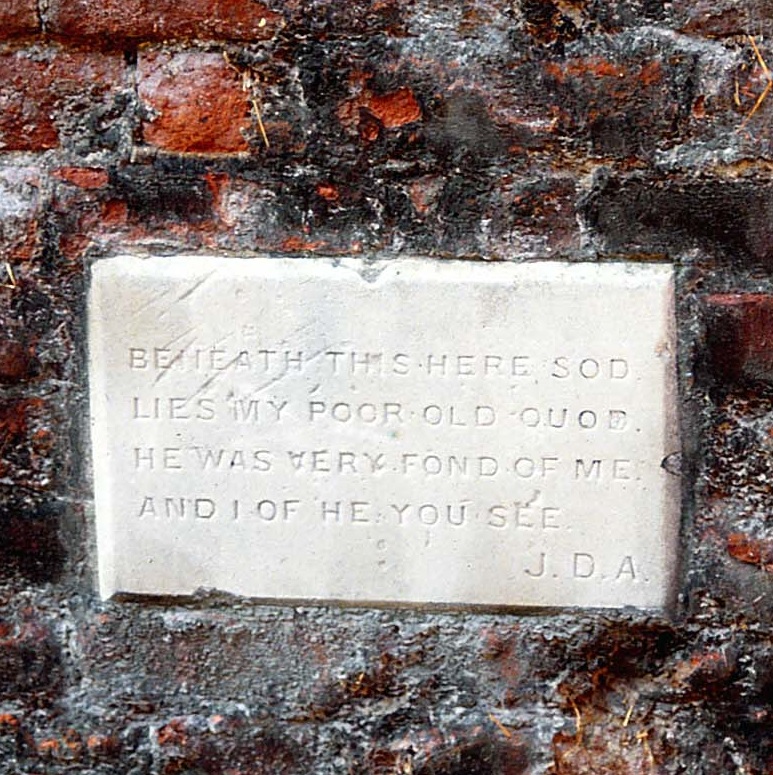
In Spring 1870 Jem Robinson sold the cottages and land to Sir John Dugdale Astley for £3000 (equivalent today to £350,000), and he used it as a base when he was racing in Newmarket. It provided him with easy access to the Limekilns, where he and his wife would hack to in order to see his horses at work, and he left a permanent reminder of his ownership of the stables where he buried one of his favourite hacks. After a successful riding career, Charles Wood bought the two cottages and land, located near the Old Station, from Sir John Astley in 1884 and established his own stables which he named Chetwynd House Stables.
1884-1887 Charles Wood
Having purchased the cottages and stables in 1884 Charles Wood converted the cottages into a single house which was designed by W C Manning and was reported to have cost £10,000 to build. He named the house Chetwynd House and began running a successful stable. In the early days he attracted wealthy, titled owners, including Sir George Chetwynd, Lord Lurgan and Sir George Arthur, and also coaxed trainer Buck Sherwood to join him as trainer. All seemed to go well for the next 3 seasons until, in December 1887, the Earl of Durham was invited to give the annual Gimcrack speech at the Gimcrack dinner at York Racecourse. The inaugural running of the race was in 1846 over 6 furlongs when won by Ellerdale. The tradition was that the winning owner had to provide 6 dozen bottles of champagne for the dinner. However, after some years the tradition changed and the owner of the winner, or his representative, was invited to give the Gimcrack speech. In 1878 Mr H Robertson's Derwentwater won at 100/15 in the hands of Fagan, but the honour of making the speech passed to the Earl of Durham. He did not hold back, accusing Chetwynd House Stable of pulling horses. The Jockey Club investigated, resulting in Chetwynd House Stables closing, Sir George Chetwynd threatening to leave the sport altogether, Charles Wood being warned off for 10 years, while Buck Sherwood was refused a licence to train in Newmarket and moved to Royston instead.
1887-1892 Captain James Machell, Richard Sherrard
Charles Wood sold Chetwynd Stables to Captain James Machell who renamed it Machell Place, leasing it to Richard Sherrard. In 1880 Richard had been head lad at Bedford Lodge Stables to Joe Dawson, taking over when Dawson died on 23rd July 1880. On 13th November 1882 Richard leased The Nunnery Stables, training for Sir George Chetwynd, but left on 10th December 1884 after 2 seasons. He then trained at Sefton Lodge for Caroline, Duchess of Montrose, but she was difficult to work for, and once their relationship broke down he moved in 1887 to Machell Place, which then had the capacity to stable 80 horses, where he trained for Sir George Chetwynd and Sir John Astley. Machell in turn leased it in 1893 to Colonel John North, putting Charlie Morton in as trainer after he left Bedford Lodge on the death of Squire George Baird.
1893-November 1893 Colonel John North, Charles Morton
John Thomas North, born 30th January 1842, was an English businessman who was born in Leeds, the son of a coal merchant. He began his working life as a millwright and engineer, progressing to become a mechanic before travelling to Chile in 1865 to seek his fortune. He was a successful businessman, becoming very wealthy from waterworks and nitrates. He returned to England, living on the Avery Hill Estate, Eltham, London, and was awarded an honorary rank of Colonel by the Tower Hamlets Volunteers. Colonel North loved racing and was a successful gambler. He leased Machell Place from Captain James Machell in 1893, installing Charlie Morton as his private trainer. However, the Colonel was not an easy owner to train for, being demanding, interfering and bossy, which led Morton to resign at the end of the 1893 season.
Spring 1895-April 1896 George Porter, Colonel John North
George Henry Porter was born at Kingsclere on 6 February 1867, the second son of the great trainer John Porter, and was sent to school in Lewisham. For ten years he assisted his father, and in early 1894 advertised for a post as a private trainer. He trained for Colonel John North at Chetwynd House, Newmarket in 1895 and in April 1896 left there for Elston House at Shrewton. John North died of a heart attack three years later on 5th May 1896.
June 1896-May 1902 Captain Machell and George Chaloner
By this stage of his life James Machell was a miserable wretch in a terrible state, suffering from kidney stones and gout. George Chaloner was his trainer for the 1896 season, but Machell only won 10 races all season. George was born on 9th November 1869 in Middleham, Yorkshire, son of Tom Chaloner who had ridden the 1863 Derby winner Macaroni (SR 2017), and George became a successful jockey, winning the 1888 Royal Hunt Cup aboard Shilelagh, and again in 1892 with Suspender. He also won the 1891 Wokingham Stakes on Rathbeal. After retiring as a jockey he tried his hand at training, especially for Captain Machell at Machell Place. Captain Machell's fortunes improved in the 1899 season despite have so few horses at Machell Place, where George Chaloner also trained for Bunny Leigh. In 1901 George Chaloner trained Stealaway to land the Royal Hunt Cup for Bunny Leigh at 4/1. Captain Machell's health continued to deteriorate, and he died on Sunday 11th May 1902, and was buried in Newmarket cemetery on Saturday 17th May 1902.
1902 Coronation Cup OSBOCH 4/1 owned by Lord Wolverton, trained by George Chaloner and ridden by Danny Maher
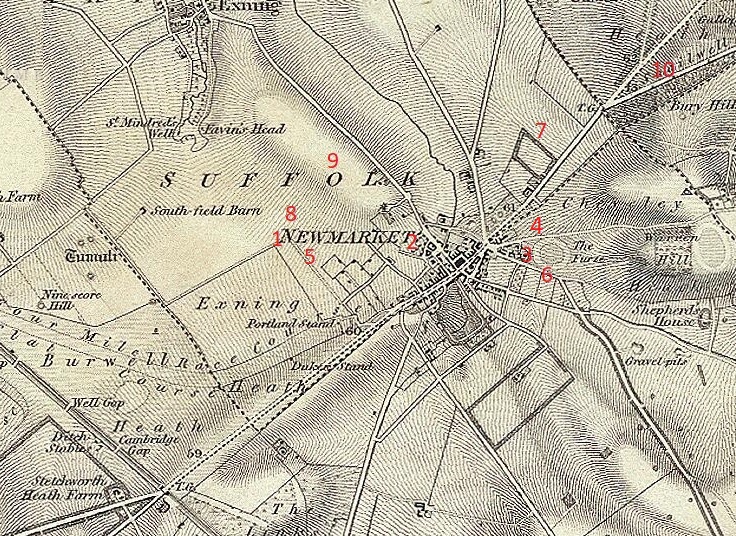
May 1902-1910 George Chaloner
George Chaloner continued to train at Machell Place and was listed as the main trainer in July 1906 by the Sporting Life when they listed all trainers around the country. In March 1908 he won the Lincoln Handicap with Kaffir Chief, but by May 1908 he was ordered to take a complete rest by his doctor for fear of a nervous breakdown, while on Wednesday 30th December 1908 he married Hannah Hyner, of Newmarket, at St Catharine's Church, Ventnor, the happy couple spending their honeymoon in Norwich. Laterly, during a period of illness in June 1909 Colledge Leader took over, and George retired from training in 1910 and became a farmer in Bedford.
1905 Chesterfield Cup LADY HELP 8/1 owned by Mr C T Pulley, trained by George Chaloner and ridden by Will Griggs
1908 Lincoln Handicap KAFFIR CHIEF 100/8 owned by Mr F S Barnard, trained by George Chaloner and ridden by J H 'Skeets' Martin
1911-1933 Colledge Leader, Jack Jarvis, Lord Wilton, Harvey Leader
Colledge Leader was born in 1883 in Wroughton, Wiltshire, son of the racehorse trainer Thomas and his wife Rose Leader (nee Mathews). Colledge took over training duties at Machell Place from George Chaloner firstly between June 1909 and Spring 1910, and then from 1911 onwards, listing Lord Harewood and J Bunny Leigh amongst his owners. He enjoyed a very successful season in 1913, winning the Doncaster Stakes, Jockey Club Stakes and Cambridgeshire with Cantilever for Lord Harewood. He served during the First World War, leaving Jack Jarvis in charge at Machell Place, but was released from military duties in December 1918 and was able to resume training at Machell Place for the likes of Lord Harewood, Sir E Paget and Bunny Leigh. In 1918, for a short period Machell Place was occupied by Lord Wilton's horses and Harvey Leader between them moving from Warren Tower and occupying Ellesmere House later in 1918. Colledge Leader won the 1922 Cambridgeshire with Re-Echo for Sir E Paget. Towards the end of the 1933 season he became private trainer to Lord Derby at Stanley House Stables, replacing George Lambton. He died on 9th December 1938 at Fairway on the Bury Road.
1913 Doncaster Stakes CANTILEVER 2/1 owned by Lord Harewood, trained by Colledge Leader and ridden by Walter Griggs
1913 Jockey Club Stakes CANTILEVER 6/1 owned by Lord Harewood, trained by Colledge Leader and ridden by Walter Griggs
1913 Cambridgeshire CANTILEVER 33/1 owned by Lord Harewood, trained by Colledge Leader and ridden by Southey
1914 Doncaster Cup WILLBROOK owned by Mr J Ryan, trained by Colledge Leader and ridden by Steve Donoghue
1922 Cambridgeshire RE-ECHO owned by Sir E Paget, trained by Colledge Leader and ridden by A Whalley
1933-1952 Thomas Edward (Ted) Leader
Thomas Edward Leader, son of racehorse trainer Thomas and his wife Rose, was born on 9th May 1902 at Wroughton, Wiltshire and developed into a very accomplished jockey. He was champion National Hunt jockey in the 1925-26 season, although the highlight of his time as a jockey was partnering Sprig to success in the 1927 Grand National. He turned to the training ranks in the early 1930s, serving his training apprenticeship in 1931 and 1932 with his uncle Harvey Leader, before taking full charge of Machell Place in 1933 when his other uncle, Colledge Leader, moved to take up a position as private trainer to Lord Derby at Stanley House Stables. Ted enjoyed early success as a trainer when Wychwood Abbot won the 1934 Cambridgeshire. He remained in charge at Machell Place until the outbreak of the Second World War, where he saw active service in the RAF, and the stables were closed. All of the horses were moved to Wroughton House where his father Thomas was in charge. At the end of the War he returned to Machell Place Stables, remaining in charge until his move to Sefton Lodge in 1952. He remained there for 15 years, returning to Wroughton House in 1967, joining uncle Harvey at a stable where both his grandfather and father had trained. He and Harvey both retired in 1971.
1927 Grand National SPRIG 8/1 favourite owned by Mrs M Partridge, trained by Thomas Leader and ridden by Ted Leader
1932 Cheltenham Gold Cup GOLDEN MILLER 13/2 owned by Miss Dorothy Paget, trained by Basil Briscoe and ridden by Ted Leader
1934 Cambridgeshire WYCHWOOD ABBOT 9/1 owned by Mr O Watney, trained by Ted Leader and ridden by Dick Perryman
1935 Jubilee Handicap WYCHWOOD ABBOT 7/1 owned by Mr O Watney, trained by Ted Leader and ridden by Dick Perryman, dead-heated with British Quota
1935 Champion Stakes WYCHWOOD ABBOT 4/6 fav owned by Mr O Watney, trained by Ted Leader and ridden by Dick Perryman
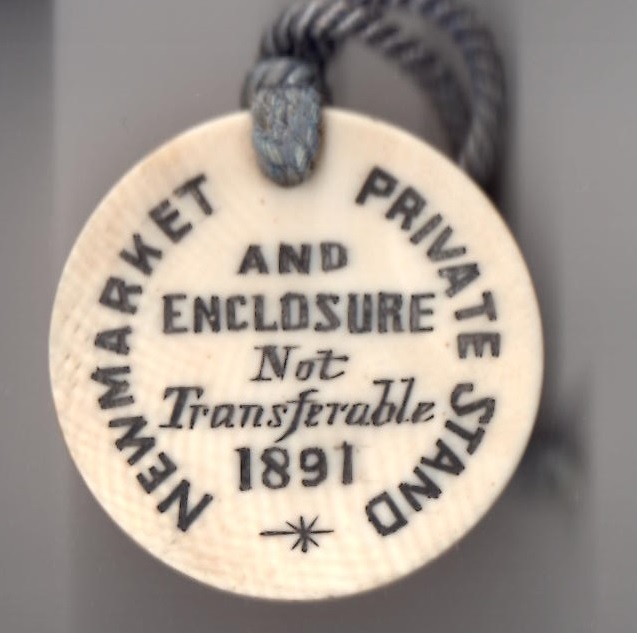
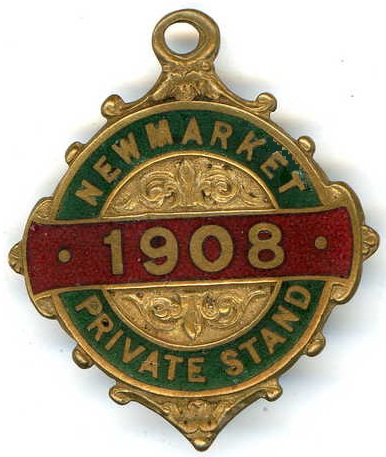
1956-February 1958 Alan (Jock) Halsey
W C Halsey, son of the successful jockey and trainer William Halsey, trained at Somerville Lodge until he died of a coronary thrombosis on Thursday 29th December 1955 aged 65. His son, Alan (Jock) Halsey then took over the small string from his late father, training them at Machell Place until he was offered the post of assistant to George Colling.
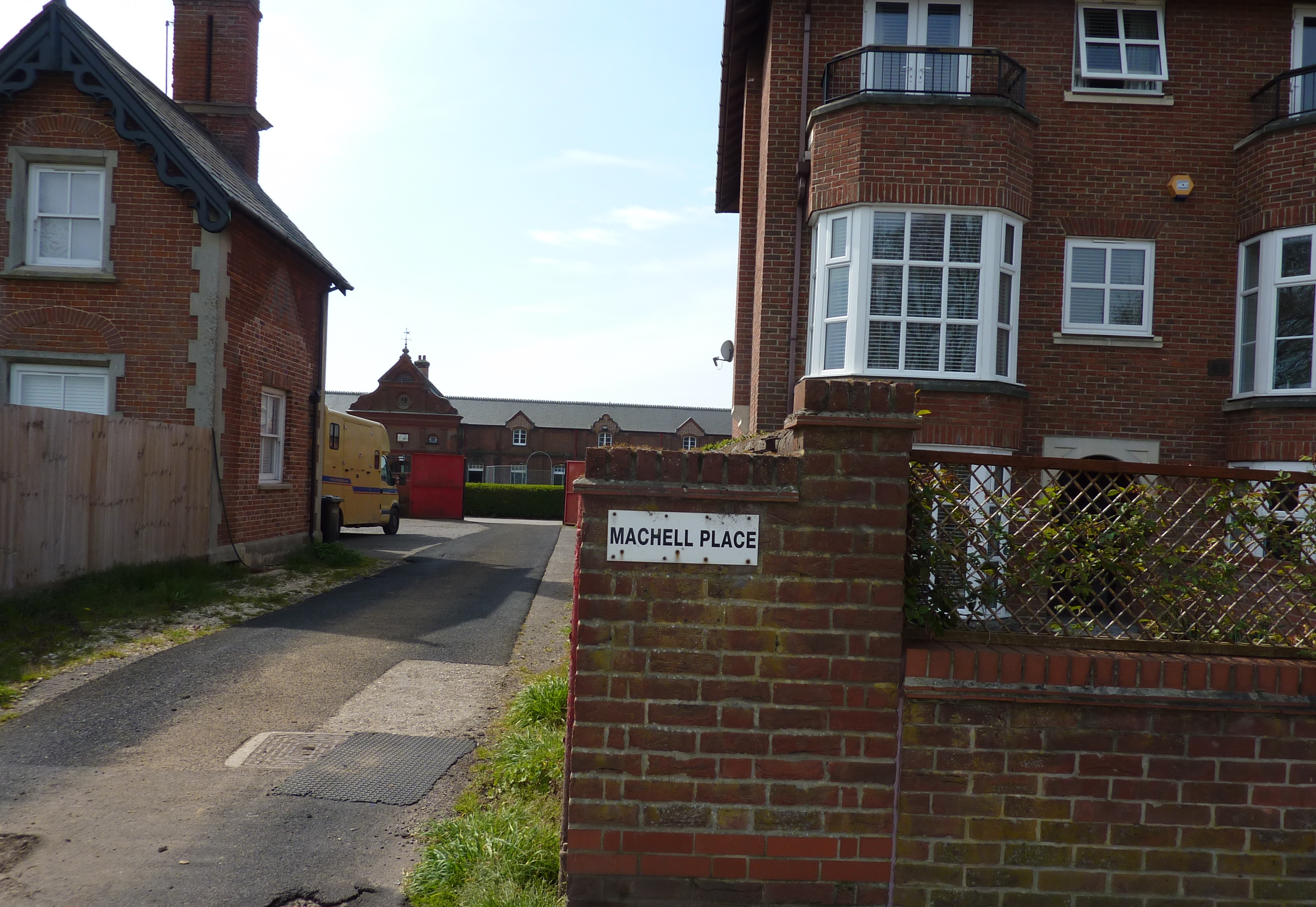
October 1958-1963 Charlie Elliott
In October 1958 E C (Charlie) Elliott was granted a trainer's licence by the Jockey Club to train in the UK, having spent the time between retiring as a jockey in 1953 and moving to Newmarket training for Marcel Boussac at Chantilly. He was an incredibly successful jockey, winning the Epsom Derby three times, in 1927 with Call Boy (SR 2049), in 1938 with Bois Roussel (SR 2058) and in 1949 with Nimbus (SR 2012). He also won the fillies equivalent, the Oaks twice, firstly in 1931 with Brulette (SR 1908) and then in 1943 with Why Hurry (SR 1882). He moved in to Machell Place, taking over from Jock Halsey and Ted Leader, and was content with a small string consisting of a four-year-old, a three-year-old and 7 two-year-olds. His first winner was in May 1959 when the 2-year-old Little Redskin was victorious, although the horse subsequently had a disappointing career despite finishing runner-up in the 1961 Wokingham Handicap at Royal Ascot. Charlie's second winner did not come until 1961 when Islwyn won the Batthyany Plate at Lincoln. He retired in 1963, enjoying 16 years in retirement before he died in 1979.
1961 Batthyany Plate at Lincoln ISLWYN 100/8 trained by Charlie Elliott and ridden by Frankie Durr
1964-1968 J F (Jack) Watts
The Watts family have a long history in racing, John Watts rode 19 Classic winners from 1883 to 1897, his son J E Watts won two Classics, J F (Jack) Watts jnr trained the 1964 St Leger winner Indiana, while his son Bill Watts began training in Newmarket in 1968. J F (Jack) Watts jnr moved in to Machell Place in 1964, training a stable of 50 horses. As early as the next year he won the 1964 Chester Vase, Great Voltigeur and St Leger with Indiana, and continued to win prominent races, in particular the 1968 Great Jubilee Stakes with Pally's Double ridden by John Lowe.
1964 Chester Vase INDIANA owned by Charles W Engelhard, trained by Jack Watts and ridden by Joe Mercer
1964 Great Voltigeur INDIANA owned by Charles W Englehard, trained by Jack Watts and ridden by Jimmy Lindley
1964 St Leger INDIANA (SR 2014) 100/7 owned by Charles W Engelhard, trained by Jack Watts and ridden by Jimmy Lindley
1965 Ormonde Stakes INDIANA 4/11 fav owned by Charles W Engelhard, trained by Jack Watts and ridden by Jimmy Lindley
1965 News of the World Stakes at Goodwood SUPER SAM 5/1 trained by Jack Watts and ridden by Peter Robinson
1968 Great Jubilee Stakes PALLY'S DOUBLE 33/1 trained by Jack Watts and ridden by John Lowe
March 1973-1976 Brian Lunness
Brian Lunness took out his own licence in early 1973 after spending a decade as head lad to Bruce Hobbs. In the early part of his training career he spent time at La Grange and Machell Place (exact dates unknown), winning with his very first runner on Thursday 22nd March 1973, Jubilee Girl (13/8 jt fav), in the Selling Plate at Doncaster when ridden by Tony Murray, and proceeded to buy the filly in. In 1976 he moved to stables previously occupied for a very short time by Snowy Wainwright. Stanley (Snowy) Wainwright had trained successfully in Norton, Malton for many years, guiding Music Boy to Gimcrack Stakes victory during its successful 2-y-o career, but was enticed to move south in October 1975 by Music Boy's owner, Ken Mackey, who had a yard at what is now Cheveley Park Stud, with its own private gallops.. He relocated to the 30-box stable in Newmarket on 25th October 1975, but just 2 months later at Christmas 1975 he returned to Malton having not settled at Headquarters. Brian Lunness replaced Wainwright at Cheveley Park yard in 1976 and completed what was arguably his most successful year, training Jimmy the Singer to win the Spillers Stewards Cup at Goodwood and Music Boy to win the King George Stakes.
1976 Spillers Stewards Cup JIMMY THE SINGER 15/1 owned by Mrs S Bates, trained by Brian Lunness and ridden by Ernie Johnson
1976 King George Stakes MUSIC BOY 16/1 trained by Brian Lunness and ridden by Greville Starkey
1977-97 Tony Hide (grandson-in-law of Colledge Leader)
Tony Hide, born on 13th May 1939, first took out a trainer's licence in 1973 in Italy, and by 1977 he successfully applied for a UK trainer's licence. He was assistant to his father, W Hide, between 1954 and 1968, followed by a year assisting Major Peter Nelson. He then moved on to assist Bruce Hobbs between 1969 and 1973 before launching out on his own, and was registered at Machell Place between 1977 and 1997.The old wooden boxes shown in the photo below were not licensed, but had been Colledge Leader's polo pony boxes and whilst the Hide's were in situ, they made use of them for their children's ponies.
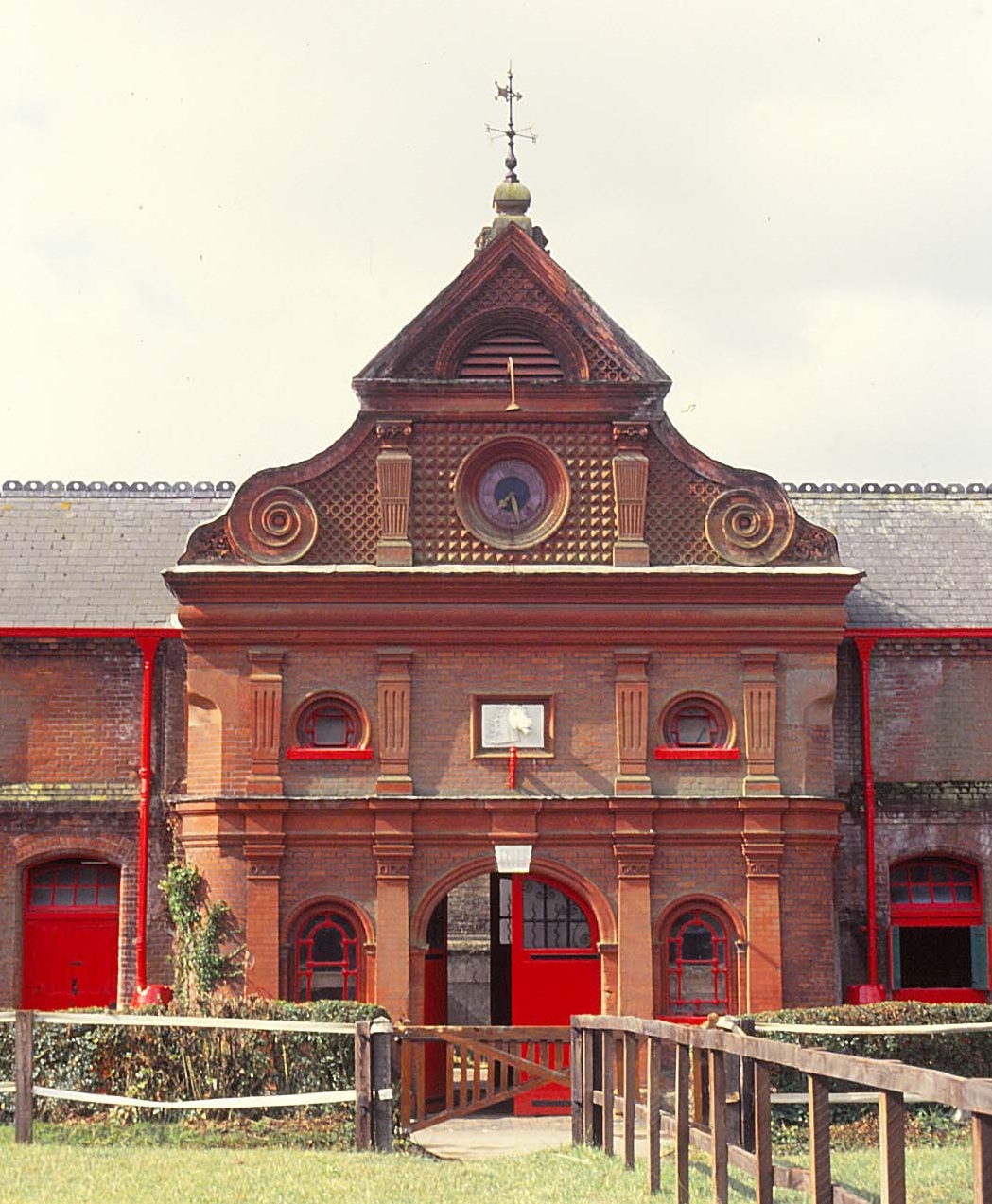
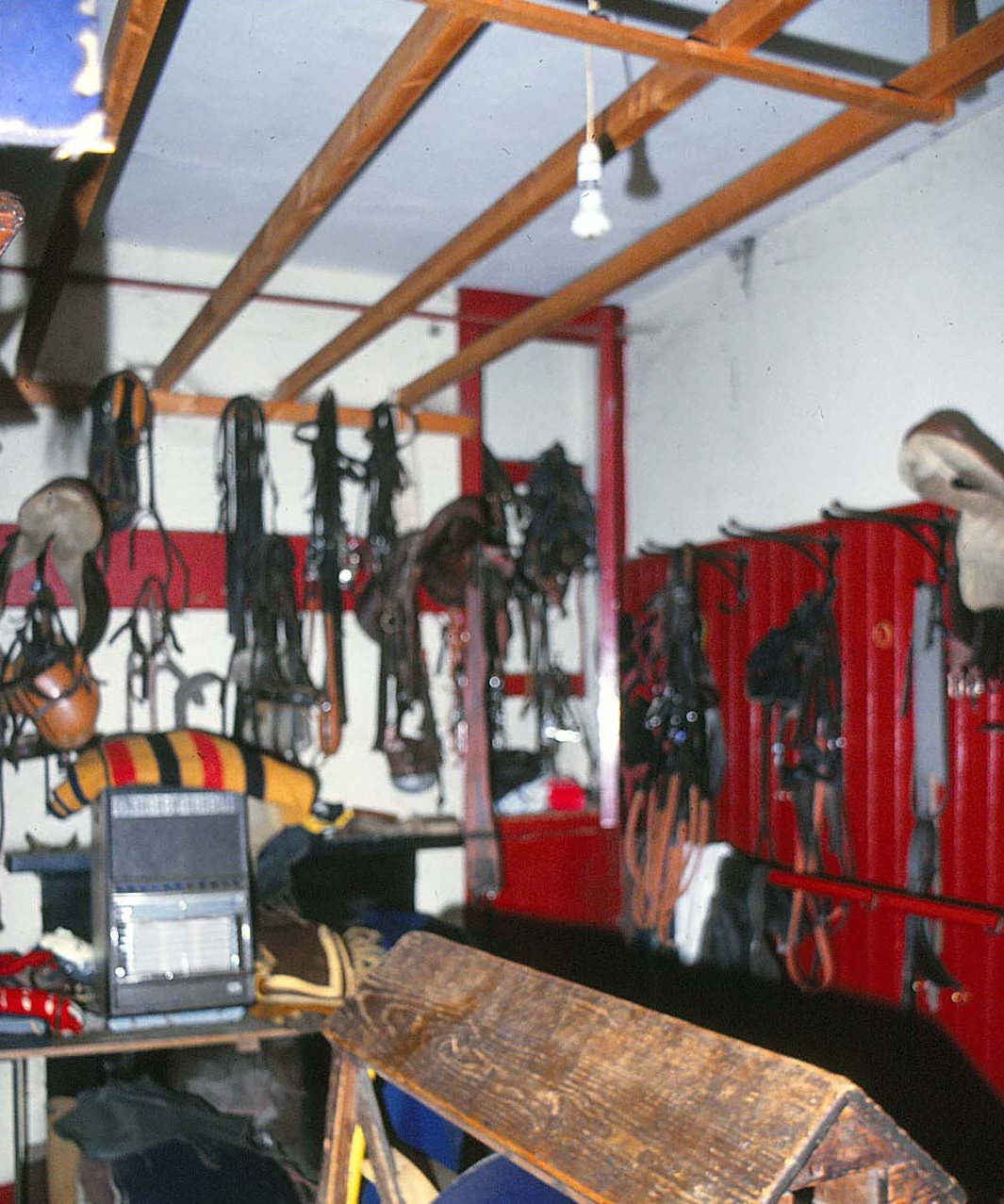
1982 Northumberland Sprint Trophy CELESTIAL DANCER 3/1 owned by Dr R Gunn, trained by Tony Hide and ridden by Edward Hide
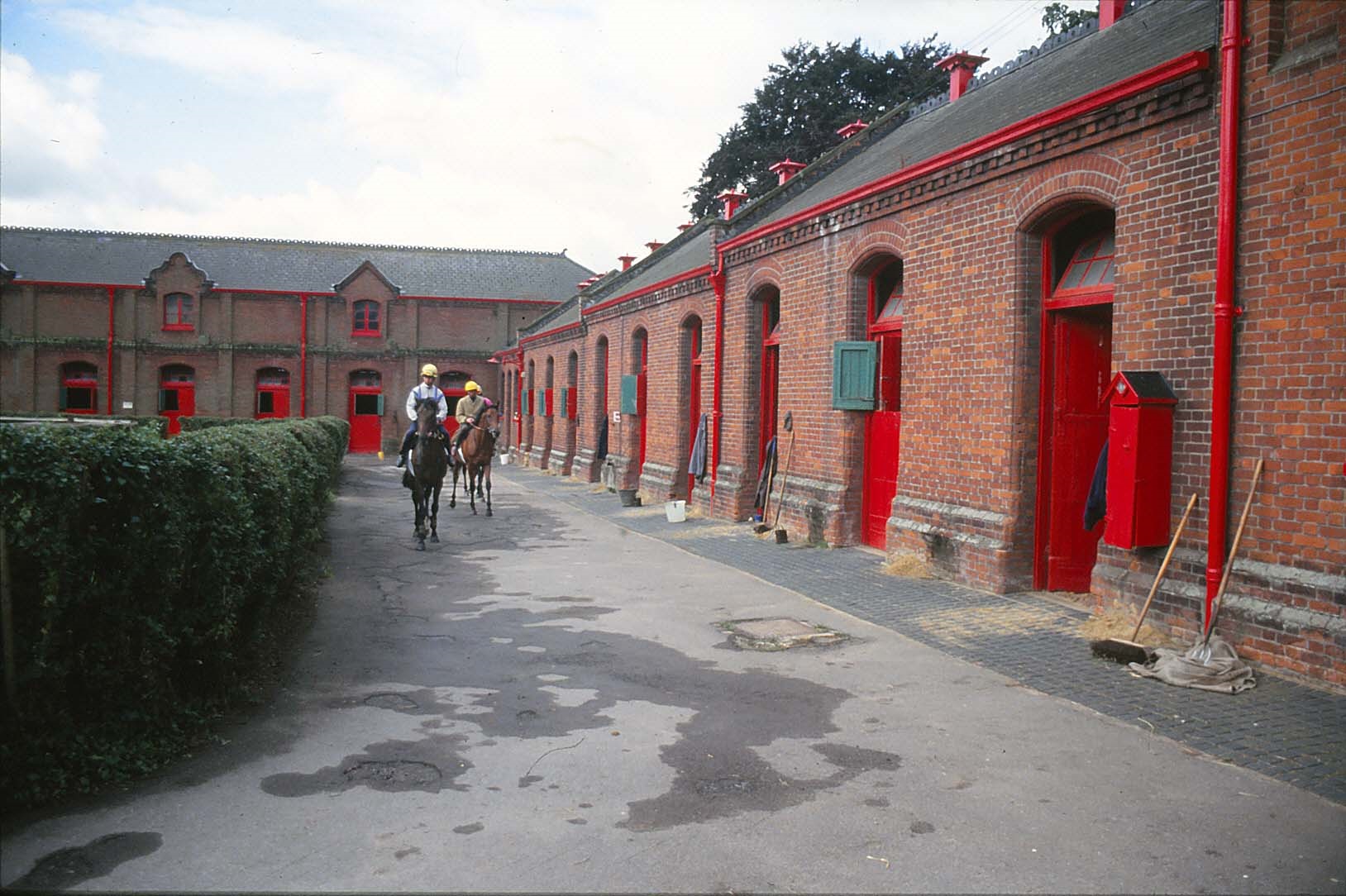
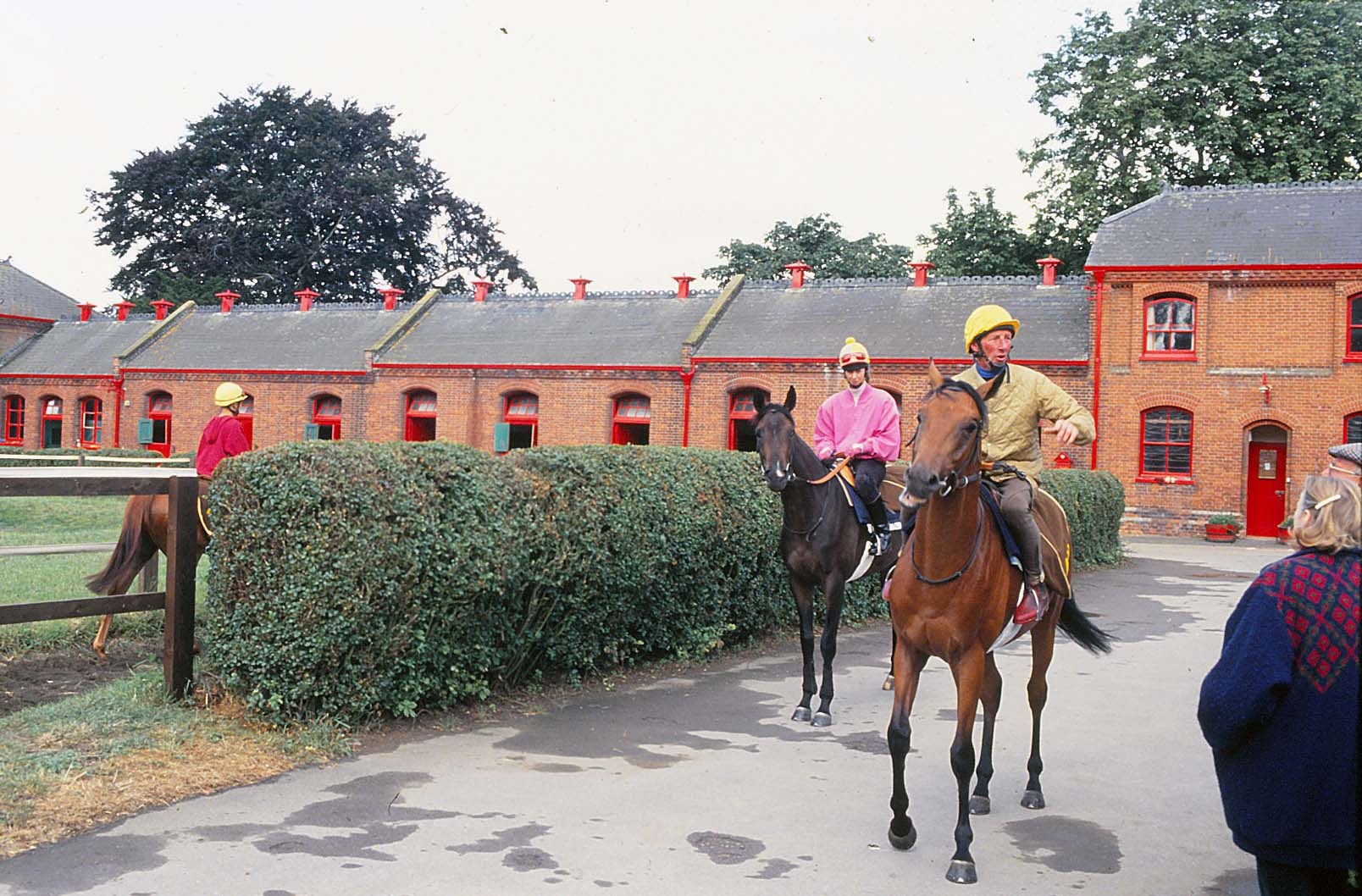
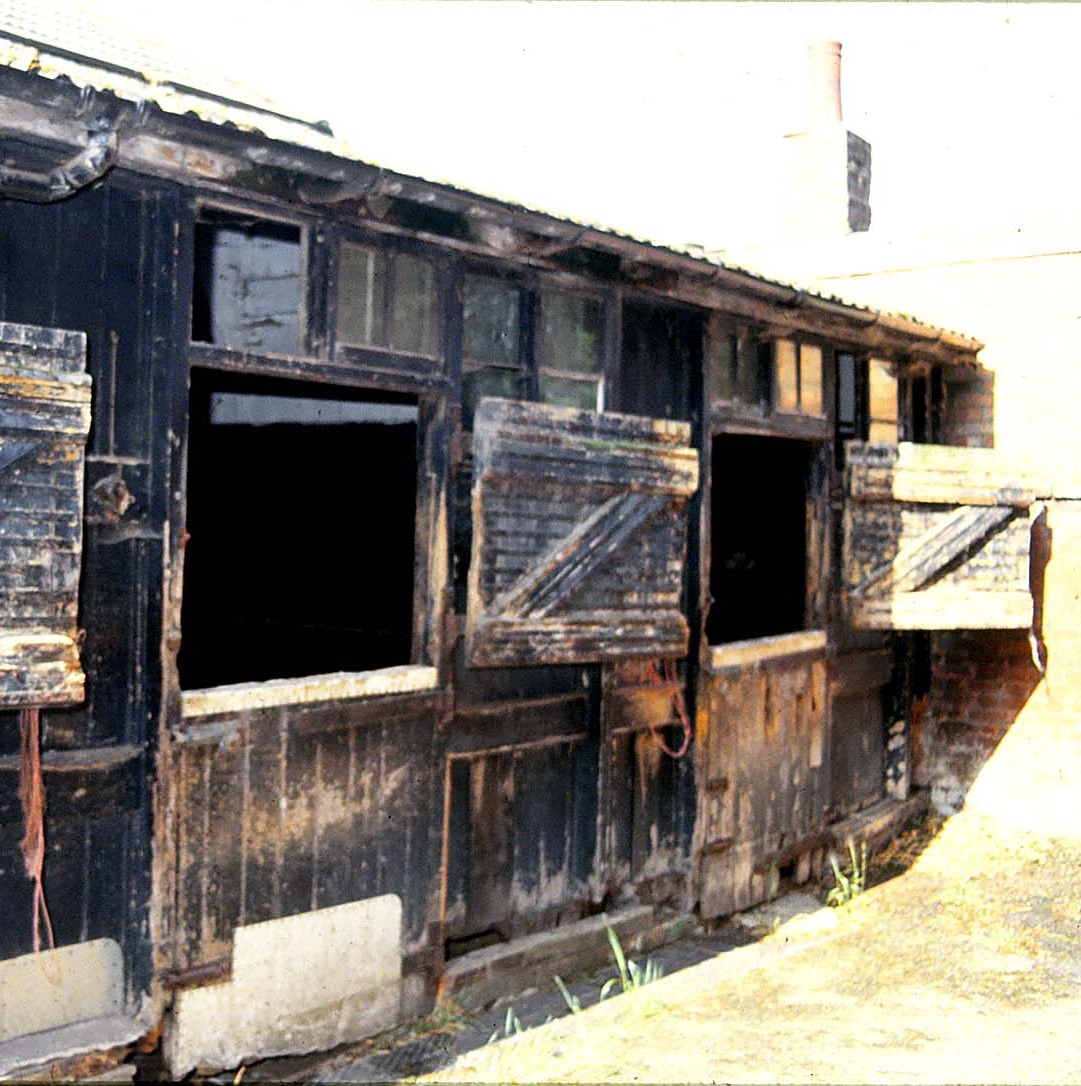
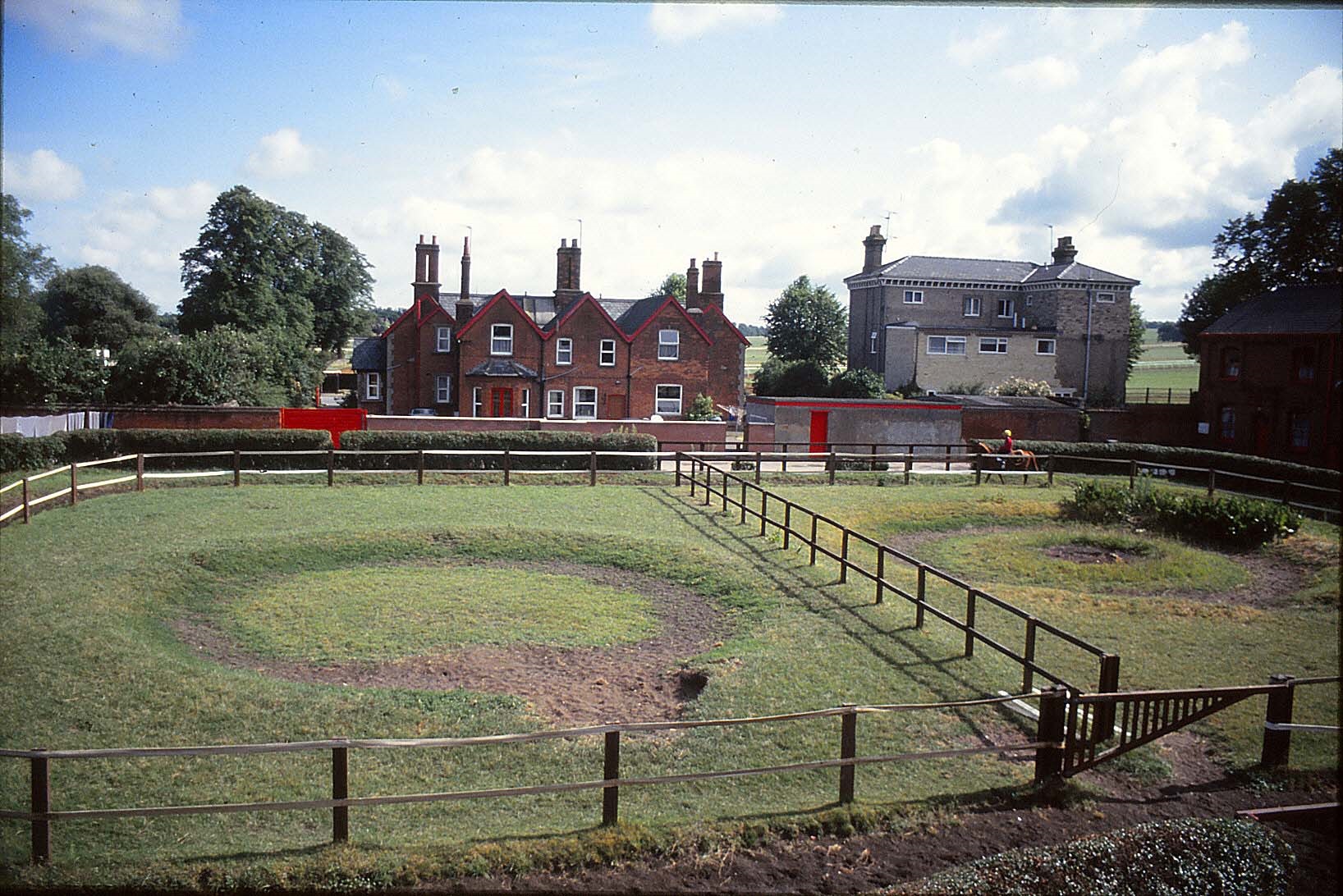
In 2006 Peter Chappell-Hyam rented the stables from Tony and Susan Hide for an initial 2-year period, and once he had trained Authorized to win the 2007 Epsom Derby he was able to purchase the stables in 2008.
Feb 2011-December 2020 Ed Vaughan
Ed Vaughan, born in County Cork, was formerly assistant trainer to Alec Stewart at Clarehaven until Alec died of cancer aged just 49. Alec had been a successful trainer since the late 1980s and is best known for sending out Mtoto to win the Eclipse Stakes in 1987 and 1988. Ed took out a temporary licence in 2004 enabling him to take charge after Alec's passing, and then he leased a barn from Henry Cecil at Warren Place Stables from 2005 until November 2007. In December 2007 he relocated to Grange House Stables, owned by Jamie Spencer, remaining there until January 2011. He then moved to his current location, Machell Place Stables in February 2011. In 2010 Peter Chapple-Hyam had sold Machell Place House for £550,000 and had put the stables on the market, but Ed took over the 26 boxes in February 2011. Arguably his most success horse has been Dance and Dance who won the Aphrodite Stakes and Prix de Pomme in 2019. At the end of the 2020 season Ed Vaughan depart for the USA to continue his training career.
2011 Investec Mile DANCE & DANCE 15/2 owned by Mohammed Rashid, trained by Ed Vaughan and ridden by Ryan Moore
2014 Seaton Delaval Handicap DANCE & DANCE 9/2 owned by Mohammed Rashid, trained by Ed Vaughan and ridden by Richard Kingscote
2019 Aphrodite Fillies Stakes DAME MALLIOT 11/2 owned by Anthony Oppenheimer, trained by Ed Vaughan and ridden by Hollie Doyle
2019 Prix de Pomme DAME MALLIOT 14/10 fav owned by Anthony Oppenheimer, trained by Ed Vaughan and ridden by Frankie Dettori
December 2020-present Kevin Philippart De Foy
Kevin Philippart De Foy, a French speaking Belgian born in 1991, is the son of former lady jockey Brigitte Jacques who rode for over 30 years. He had an ambition to become a racehorse trainer from an early age and was sent to the legendary stables of Criquette Head at the same times as Treve was gaining dual Arc successes. He then spent some time with John Oxx in Ireland, followed by a stint with Christophe Clement in America, before arriving in Newmarket to assist James Fanshawe at Pegasus stables. He gained 5 years invaluable experience with James, but it was always his target to become a trainer in his own right by the time he was 30, and he met that target in December 2020 when he replaced Ed Vaughan, who had departed for USA, at the historic Machell Place Stables on the edge of Warren Hill. The stables have the capacity to house 37 horses and Kevin launched his career filling 25 of the boxes.
INDIANA (1964 St Leger, Great Voltigeur, Chester Vase)
CANTILEVER (1913 Jockey Club Stakes, Doncaster Stakes, Cambridgeshire)
WYCHWOOD ABBOT (1935 Champion Stakes, 1934 Cambridgeshire)
OSBOCH (1902 Coronation Cup)
WILLBROOK (1914 Doncaster Cup)



